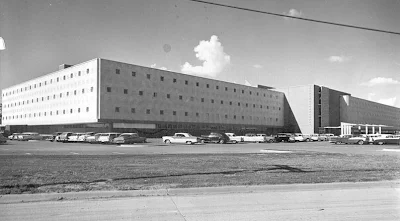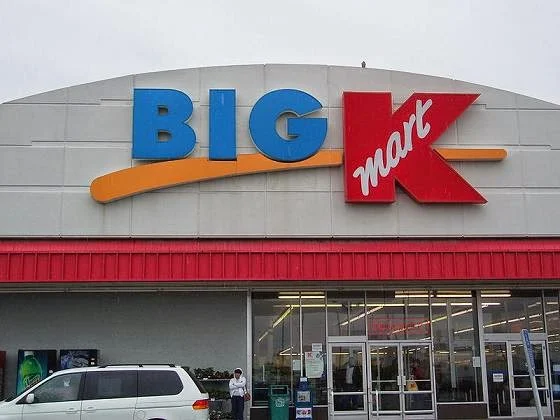GOLD CIRCLE / GOLD TRIANGLE / GOLD KEY
Cincinnati's Federated Department Stores announced their new Gold Circle discount division in November 1967. Based in Worthington, a Columbus suburb, Gold Circle's first store was built in the northern environs of Columbus, in unincorporated Franklin County. It welcomed its first customers on April 28, 1968.
News of Gold Triangle, a Miami-based Federated discount division, surfaced in October 1968. The first two stores were located in the Kendall area of South Dade County and in the city of Plantation (a Fort Lauderdale suburb). Simultaneous grand openings were held on May 21, 1970.
The typical Gold Circle encompassed between 85,000 and 135,000 square feet. Gold Circle units featured lines of small and major appliances, electronics, cameras, sporting goods, housewares, apparel, shoes, hardware, home improvement and garden supplies. Some locations featured a supermarket, either a Fisher-Fazio, Gold Circle Discount Foods, Kroger or Kanter Food Market.
Gold Triangle operations were oriented more toward small and major appliances, electronics, cameras, home improvement materials and lawn and garden equipment. Stores averaged between 76,000 and 86,000 square feet. A third store opened in South Dade in 1970. In 1973, Gold Triangle stores were dedicated in Orlando and Tampa. The sixth -and final- location opened, in Hialeah, in 1974.
Federated's Gold Key chain of stores was introduced, in Costa Mesa and San Jose, California, in 1972. Units measured between 158,000 and 167,000 square feet. All lines of general merchandise were sold. The Gold Key endeavor proved unsuccessful, with only three store being built. The chain was defunct by 1976.
At the same time, the Gold Circle chain was expanding at a rapid clip. Additional Buckeye State stores were dedicated in Springfield (1973), Akron (1974) and Canton (1974). These stores were joined by new units in Rochester, New York (1975) and Lexington and Florence, Kentucky (1976). Expansion into the California market brought Gold Circle stores to Sacramento (1976) and San Jose (1977).
Federated Stores merged with the Atlanta-based Rich's chain in October 1976, taking on its Richway discount division in the process. Six Gold Triangle stores in Florida were shuttered in early 1982. Five re-opened as Richway locations in the fall of the same year. The expansion of Gold Circle into California failed to meet previous expectations. A retail retreat from the Golden State had been completed by late 1979.
In 1986, forty-five Gold Circle and thirty-one Richway stores were joined into a single, Worthington-based operation, with each chain retaining its nameplate identity. However, Richway units in North and South Carolina were rebranded as Gold Circle stores.
The end came under the auspices of Robert Campeau, the Canadian corporate raider. Campeau sold the two discount divisions in September 1988 in an attempt to bolster his financially-strapped Federated chain. Seventy-six stores closed on November 21, 1988. They were acquired by the Jericho, New York-based Kimco Development Corporation. Thirty-three were re-sold to Minnesota's Dayton Hudson Corporation, with thirty-one being leased by Hills Department Stores.
GOLD CIRCLE / GOLD TRIANGLE-ANCHORED SHOPPING MALLS:
*SKYLAKE MALL, Dade County, FL (1970) [Gold Triangle]
*WESTERVILLE MALL, Westerville, OH (1974) [Gold Circle]
*BEECHMONT MALL, Hamilton County, OH (1982) [Gold Circle]








.jpg)













































